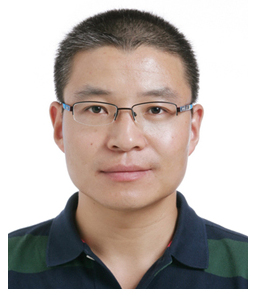AN Jiandong
Date:2016-04-06

Pollination Entomoligist
Prof. Dr. AN Jiandong
PhD/MS student supervisor, for the major of Special Economic Animals (Bees)
Chief Scientist of the ASTIP Team for Bee Pollinator Resources
Key Laboratory for Insect-Pollinator Biology of the Ministry of Agriculture
Institute of Apicultural Research, Chinese Academy of Agricultural Sciences
Beijing 100093, China
Office phone: 0086-10-62591749
Email: anjiandong@caas.cn
PROFESSIONAL INTERESTS
Research on Bee pollinators and Pollination.
For bee resources, mainly on bumblebees, includes field survey to fill in the gap of bumblebee fauna of China, diagnosis the difficult species/groups by DNA barcoding, conservation of the native bumblebees of China, application assessment to select effective native bumblebee species for commercial rearing and pollination, and reveal the molecular mechanism of some important biological traits of bumblebees. For bee pollination, includes effectiveness and the mechanisms of insect pollination, the importance of insect pollination for agricultural and natural ecosystems, and developing the effective bee pollination management tools.
Current research grants includes ‘Bee Pollinator Resources Team’ in the Agricultural Science and Technology Innovation Program (2015-2025), and ‘The systematics and distribution of bumblebees of China’ in the Natural Science Foundation of China (2017-2020).
EDUCATION
2008.09-2012.07: PhD. in Economic Insects, Fujian Agriculture and Forestry University.
2001.09-2004.07: MA. In Special Economic Animals, Chinese Academy of Agricultural Sciences
1994.09-1998.07: BA. in Bee Sciences, Fujian Agricultural University.
EXPERIENCE
2016.03-present: Member of the Academic Committee of CAAS
2015.02-present: Vice-Chair of the Academic Committee of IAR-CAAS
2012.02-present: Council Member of the International Commission for Plant-Pollinator Relationships
2011.10-present: IUCN SSC Bumblebee Specialist Group, Regional Coordinator for East Asia
2006.12-present: Vice-Chair of the Committee of Foraging Plants and Pollination, Apicultural Science Association of China
2013.02-2013.08: visitor, Department of Life Sciences, Natural History Museum, UK
2010.10-2011.01: visitor, Department of Entomology, Natural History Museum, UK
2001.07-2001.08: visitor, Faculty of Agriculture, Cukurova University, Turkey
1998.07-present: Researcher of CAAS Institute of Apicultural Research
TOPICS FOR PhD/MS STUDENTS AND POSTDOCS
[1] Diagnosis/reveal the difficult groups of bumblebee species/complex by DNA barcoding.
[2] Effective bumblebee species selection for commercial rearing and pollination.
[3] Study on the egg laying competition between queen and worker of bumblebees.
[4] Threaten assessment of the introduced European bumblebee Bombus terrestris to the native bumblebees.
[5] Effect of land use / pesticide use / climate change on insect pollinators diversity in East Asia.
[6] Effect of pesticides on foraging behavior and reproduction of bee pollinators.
[7] Developing strategies for conservation of the native bees of East Asia.
[8] Assess pollination effectiveness of pollinators, study on the mechanism of insect pollination.
[9] Assess insect pollination service to agricultural and natural ecosystems.
SELECTED PUBLICATIONS (RECENT FIVE YEARS)
[1] Zhang H, Zhou Z, Huang J, Yuan X, Ding G, An J*. Queen traits and colony size of four bumblebee species of China. Insectes Sociaux, 2018, 65, 537−547.
[2] Naeem M, Yuan X, Huang J*, An J*. Habitat suitability for the invasion of Bombus terrestris in East Asian countries: A case study of spatial overlap with local Chinese bumblebees. Scientific Reports, 2018, 8, 11035.
[3] Liu Y, Zhao X, Naeem M, An J*. Crystal structure of peptidoglycan recognition protein SA in Apis mellifera (Hymenoptera: Apidae). Protein Science, 2018, 27, 893−897.
[4] Yuan X, Naeem M, Zhang H, Liang C, Huang J, An J. Evaluation of reproductive disturbance to Chinese bumblebees by the European bumblebee, Bombus terrestris (Hymenoptera: Apidae). Acta Entomologica Sinica, 2018, 61(3): 348−359.
[5] Huang J, An J. Species diversity, pollination application and strategy for conservation of the bumblebees of China. Biodiversity Science, 2018, 26(5): 486−497.
[6] Garibaldi LA*, Carvalheiro LG, Vaissière BE, [---], An J, [---], Zhang H. Mutually beneficial pollinator diversity and crop yield outcomes in small and large farms. Science, 22 Jan 2016, 351(6271): 388−391.
[7] Williams PH*, Huang J, Rasmont P, An J*. Early-diverging bumblebees from across the roof of the world: the high-mountain subgenus Mendaci-bombus revised from species’ gene coalescents and morphology (Hymenoptera, Apidae). Zootaxa, 2016, 4204(1): 1–72.
[8] Xie Z*, Pan D, Teichroew J, An J*. The potential influence of bumble bee visitation on foraging behaviors and assemblages of honey bees on squash flowers in highland agricultural ecosystems. PLoS ONE, 2016, 11(1): e0144590.
[9] Zhou Z, Zhang H, Liang C, Zou Y, Dong J, Yuan X, Huang J, An J*. Foraging preference of the honeybee Apis mellifera and the bumblebee Bombus lantschouensis (Hymenoptera: Apidae) in peach greenhouse. Acta Entomologica Sinica, 2015, 58(12): 1315−1321.
[10] Huang J, An J*, Wu J*, Williams PH. Extreme food-plant specialisation in Megabombus bumblebees as a product of long tongues combined with short nesting seasons. PLoS ONE, 2015, 10(8): e0132358.
[11] Zhang H, Huang J, Williams PH, Vaissière BE, Zhou Z, Gai Q, Dong J, An J*. Managed bumblebees outperform honeybees in increasing peach fruit set in China: different limiting processes with different pollinators. PLoS ONE, 2015, 10(3): e0121143.
[12] Huang J, Wu J*, An J, Williams PH. Newly discovered colour-pattern polymorphism of Bombus koreanus females (Hymenoptera: Apidae) demonstrated by DNA barcoding. Apidologie, 2015, 46(2): 250−261.
[13] Williams PH*, Bystriakova N, Huang J, Miao Z, An J*. Bumblebees, climate, and glaciers across the Tibetan plateau (Apidae: Bombus Latreille). Systematics and Biodiversity, 2015, 13(2): 164–181.
[14] Gai Q, Zhou Z, Zhang H, Huang J, An J*. Optimizing supplementary pollen mixtures for bumblebee Bombus terrestris colonies based on colony reproductive variables. Chinese Journal of Applied Entomology, 2015, 52(2): 333−342.
[15] An J*, Huang J, Shao Y, Zhang S, Wang B, Liu X, Wu J, and Williams PH*. The bumblebees of North China (Apidae, Bombus Latreille). Zootaxa, 2014, 3830(1): 1–89.